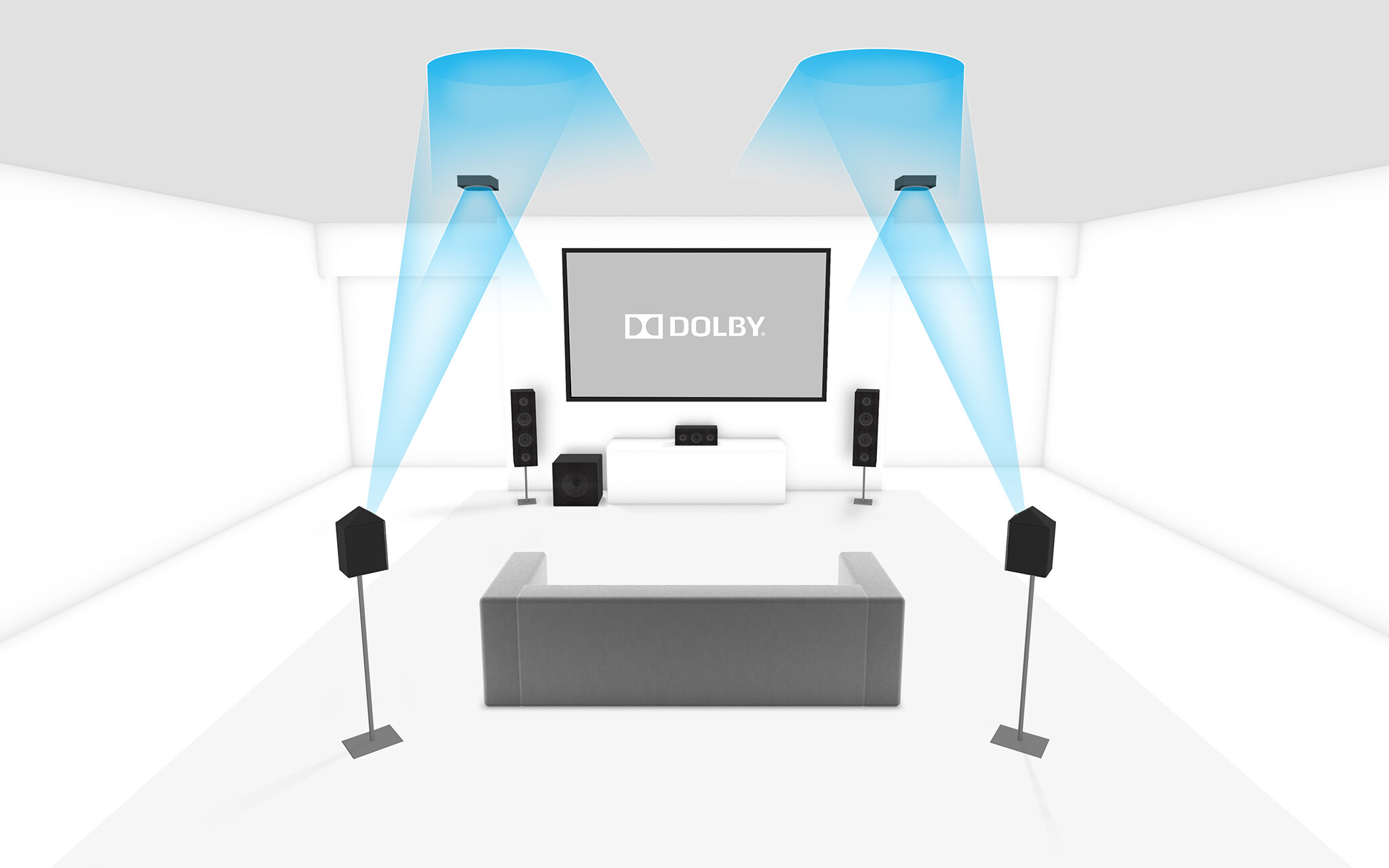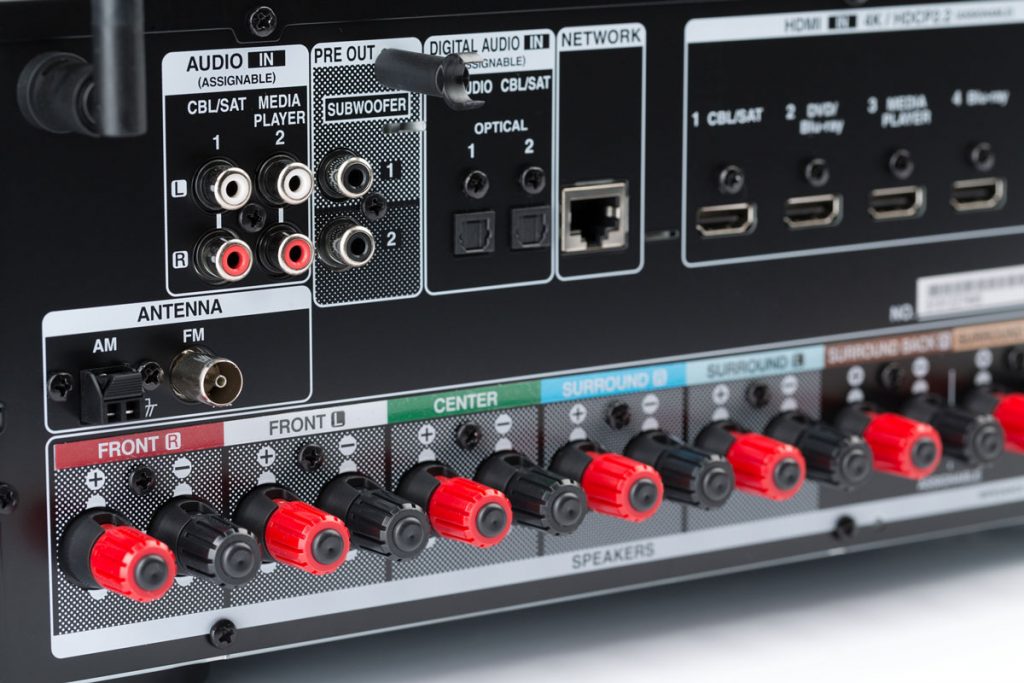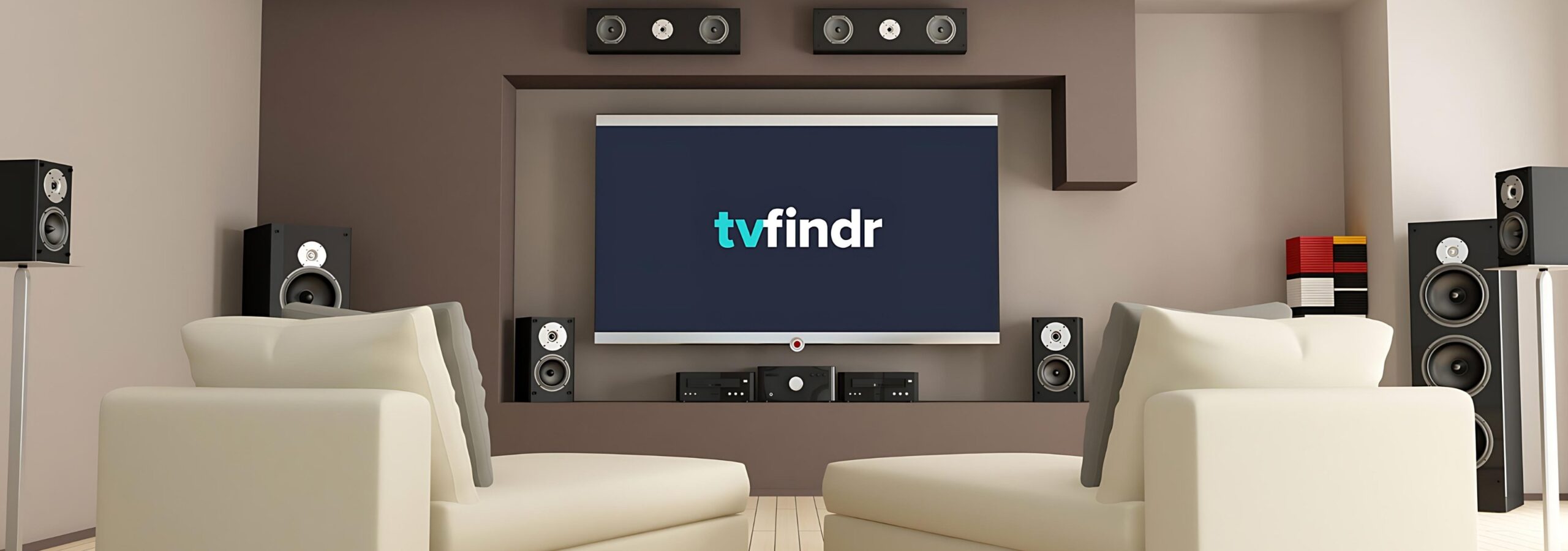Dolby Atmos: A revolution for surround sound
Dolby Atmos takes the listening experience to a new level. Thanks to the innovative approach of treating sound as a three-dimensional object, this technology enables a dynamic soundscape that immerses the listener in an all-encompassing sound bubble. Combined with a high-resolution image, this is a great solution for the screening room at home. We explain what exactly is behind it and how a typical setup is constructed.
What many moviegoers are usually not aware of is that a memorable cinema experience is not just about an impressive picture. It is just as important to have a coordinated sound that is as atmospheric as possible. On the one hand, the necessary clarity and depth can be conveyed in quiet scenes and, on the other, action-packed excerpts can be conveyed to the abdominal region with sufficient sound pressure.
The concept behind Dolby Atmos
The Dolby Atmos audio format was developed by Dolby Laboratories and is the logical step towards an immersive sound experience. Originally designed for cinemas, there are now numerous solutions to choose from that allow you to easily bring the technology into your home. The concept has also been adapted for various other applications such as headphones, smartphones and cars.
Conventional home theater systems typically have a 5.1-channel system. This means four satellite speakers, a center speaker and a subwoofer. The Atmos system expands this traditional surround sound system by implementing so-called overhead channels. This means that sounds can not only be played around the listener, but also above them.

This is ensured either by additional ceiling speakers or a sophisticated algorithm for sound reflection via up-firing speakers. Here, the sound is emitted upwards and then refracted at the ceiling. The technology uses sound objects instead of traditional channels, allowing sounds to be positioned precisely in the room.
This means that playback is not dependent on individual channels. The sound is placed and played in a three-dimensional space. This results in an immersive audio experience in which sounds can come from any direction. A typical Dolby Atmos setup with two additional speakers therefore results in a 5.1.2-channel solution. Larger setups are also possible. In extreme cases, you can realize a 24.1.10 configuration here.
Where is Dolby Atmos available?
A wide range of devices and platforms now support the Dolby Atmos format. From certified AV receivers and soundbars to well-known streaming services that include the corresponding sound options in their offerings. The number of Blu-ray films on offer with a Dolby Atmos track is also increasing. The growing availability of Atmos-compatible content therefore underlines the importance of this sound technology.
The competitors DTS:X and Auro-3D
What is DTS:X?
DTS:X, a development from Digital Theater Systems, is a direct competitor to Dolby Atmos and also focuses on object-based surround sound, which creates an immersive listening experience. The main difference to Dolby Atmos lies in the storage and encoding methods. While Dolby Atmos encodes using Dolby Digital Plus or Dolby True HD, DTS:X uses the DTS-HD High Resolution Audio format.
This technical innovation provides flexibility in the positioning of sound objects and allows a precise three-dimensional audio environment to be generated. This adaptability in configuration has brought the format into particular focus. Accordingly, no prescribed number of loudspeakers or special positioning of the individual channels is necessary as long as the codec is supported by the device.
What Auro-3D can do
Developed by Auro Technologies from Belgium, the company strives for a similar but uniquely implemented goal with its immersive sound format Auro-3D. The system requires the use of numerous speakers, sometimes in a 13.1 configuration, positioned at different heights to create a more natural and immersive sound environment.
This arrangement encompasses both horizontal and vertical sound dimensions, allowing for precise placement and enhancing the listening experience by creating a three-dimensional sound space. Auro-3D remains an important part of the immersive audio landscape despite the dominance of Dolby Atmos and DTS:X, even if the codec occupies more of a niche position.
The different speaker configurations that Auro-3D offers compared to its competitors are a challenge for users looking for an optimal experience with both systems. Auro-3D offers a unique experience despite its specific approach and limited studio support.

Virtual surround sound
Virtual surround sound is made possible by soundbars that create the impression that the sound is coming from different directions. Technologies such as Virtual Dolby Atmos or DTS Virtual:X use sophisticated audio processors to reflect and manipulate sound waves in such a way that a spatial listening experience is created. In particular, high-quality devices in the price range above 1000 euros use advanced algorithms and acoustic designs to simulate this auditory impression as accurately as possible.
These methods take into account the particularities of the environment and can automatically adapt to the conditions by means of room correction. Sound is specifically reflected from walls and ceilings to simulate a three-dimensional sound backdrop for the listener. In lower price ranges, however, the result often falls short of expectations. Typically, this principle does not come close to the accuracy of native concepts.
Physical surround sound
Spatial sound created via physical elements requires a more complex setup of multiple sound generators distributed throughout the room to create a multidimensional soundscape. Such systems usually consist of different building blocks and enable a profound immersion that puts the listener at the center of the action. However, this quality can come at a price. Several thousand euros is by no means unusual.
With technologies such as Dolby Atmos, this experience can be further enhanced by allowing the placement of individual objects and integrating overhead channels for sound from above. This allows you to recreate a cinematic experience with impressive authenticity and depth. The choice and configuration for your home theater is therefore a point that requires careful consideration of costs and benefits.

Home theater: combination of picture & sound
To create the perfect home theater experience, not only is choosing a high-quality TV crucial, but integrating the right sound can also be a challenge. Investing in high-quality speakers is the first step, but the acoustic properties of the room and careful alignment are at least as important.
Understanding how the sound interacts in the room is therefore beneficial to creating an environment where dialogue & effects can be precisely localized and the music is fully immersive. Various factors such as room size, furniture arrangement and even wall texture can have a significant impact on the sound.
You should take these aspects into account and make adjustments where necessary to ensure an optimal listening environment. For a superior experience, we therefore recommend using at least one high-quality soundbar solution.
Still haven’t had enough when it comes to home cinema? Then we recommend you take a look at our guide article on 4K resolution to deepen your understanding.



